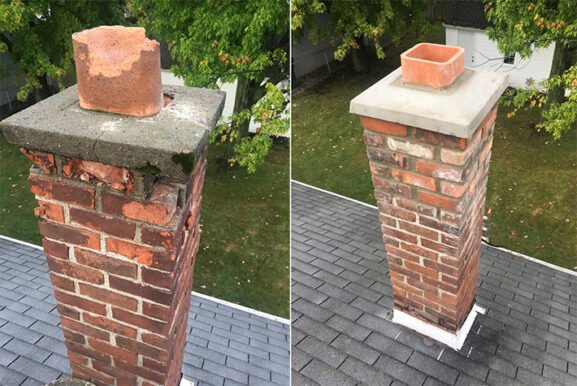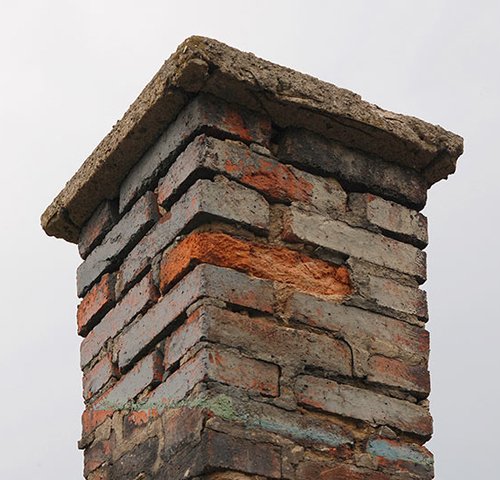Understanding the Real Costs Behind Chimney Repairs in Today’s Market
Key Takeaways
- Chimney repair costs vary significantly depending on the type and severity of damage
- Minor repairs like cap or mortar fixes are often more affordable than structural restorations
- Location, chimney material, and labor rates all influence the final cost
- Preventive maintenance can help homeowners avoid more expensive repairs later on
Why Chimney Repairs Matter More Than Ever
Chimneys play a critical role in home ventilation and safety. Whether you’re using a wood-burning fireplace or a gas insert, a properly maintained chimney keeps your home warm while channeling smoke, moisture, and gases away. However, over time, exposure to the elements, creosote buildup, and general wear and tear can lead to damage that needs professional attention.
Repairing a chimney promptly can prevent small problems from becoming major structural hazards. But how much should you expect to pay for these repairs today? Understanding the average cost of chimney repair can help homeowners budget accordingly and make informed decisions.
Typical Price Range for Chimney Repairs
The cost of chimney repair depends heavily on the issue at hand. On average, homeowners in the United States spend between $300 and $1,800 for chimney repairs. Minor jobs like sealing cracks or replacing a chimney cap may cost under $500, while extensive damage such as a full rebuild or liner replacement can run well over $3,000.
Here’s a breakdown of average repair costs based on the type of work required:
| Type of Repair | Average Cost |
| Chimney Cap Replacement | $150 – $300 |
| Mortar Joint Tuckpointing | $500 – $1,500 |
| Chimney Crown Repair | $600 – $1,000 |
| Chimney Liner Installation | $1,500 – $4,000 |
| Full Chimney Rebuild | $4,000 – $10,000+ |
These figures are national averages and can shift depending on your region, labor rates, and material availability.
Factors That Influence Chimney Repair Costs
Several variables affect how much you’ll pay to get your chimney back in shape. Here are the most important factors to consider:
Type and Extent of Damage
Minor issues like chipped bricks or hairline cracks are usually inexpensive to fix. However, structural damage, leaning chimneys, or moisture-related decay in the flue can lead to high repair bills. Masonry work and internal flue replacements tend to be the most costly.
Chimney Material and Design
Brick chimneys are common in older homes and generally require more specialized repair methods than metal or prefabricated options. Chimneys with intricate designs or unusual heights may also cost more due to access difficulty and the need for scaffolding or lifts.
Local Labor Costs and Permits
Labor rates vary significantly between regions. In urban areas like New York City or San Francisco, expect to pay a premium for professional labor. Permits or inspections required by local building departments can also add to the overall expense.
For example, in states like New Jersey, local codes may require chimney liners for certain fuel types, as explained in this resource from the New Jersey Department of Community Affairs.
Accessibility and Roof Type
If the chimney is hard to reach or located on a steep or multi-story roof, it increases the labor involved. Technicians may need special safety gear or lifts, all of which raise the final bill.
When to Call a Professional
Not all chimney damage is visible to the untrained eye. Water leaks, musty smells, soot buildup, or poor draft may signal hidden problems. A certified chimney sweep or mason can assess the chimney using tools like video scanning to inspect flue linings and internal cracks.
An annual inspection by a certified professional, as recommended by the Chimney Safety Institute of America (CSIA), can identify issues early. Keeping up with regular maintenance can reduce the likelihood of needing major repairs later.
Preventative Measures That Can Save You Money
Homeowners who prioritize preventive care often avoid high repair bills. Here are a few simple steps that can make a big difference:
- Annual Inspections
Schedule yearly chimney inspections to catch cracks, leaks, or buildup before they become serious problems. - Regular Cleaning
Removing creosote and soot buildup improves airflow and reduces fire risks. Cleanings generally cost between $100 and $300 depending on your location. - Install a Chimney Cap
This small investment helps keep out water, animals, and debris. It can extend the life of your chimney significantly. - Seal Cracks Promptly
Minor cracks can allow moisture in, leading to freeze-thaw damage during cold months. Use waterproof sealants or call a pro if cracks appear.
By staying proactive, you can avoid the cost of major reconstruction work in the future.
Regional Variations in Repair Costs
Where you live plays a big role in what you’ll pay. In colder regions like the Northeast or Midwest, chimneys face more intense freeze-thaw cycles, which often leads to mortar deterioration and higher demand for repair services.
In coastal regions, chimneys may face salt damage and moisture intrusion. High labor costs in major cities also drive up pricing, while rural areas tend to have more affordable service rates.
If you’re in a place with strict building codes or frequent inspections, like New York City, expect added permit and compliance costs when doing chimney work.
Comparing DIY and Professional Repairs
While it may be tempting to patch up small issues yourself, chimney systems are more complex than they appear. Incorrect repairs can create fire hazards or lead to improper venting.
Jobs like replacing a chimney cap or applying a basic sealant may be manageable for handy homeowners, but tasks involving masonry, liners, or structural integrity should be left to certified pros. It’s safer and often more cost-effective in the long run.
Smart Ways to Budget for Chimney Repairs
Unexpected repair costs can be stressful. Here are some strategies to help manage chimney expenses without surprises:
- Get Multiple Quotes
Always compare at least three estimates from local contractors. Be cautious of offers that are significantly lower than the rest—they may cut corners. - Request an Itemized Invoice
Knowing what you’re paying for helps prevent being overcharged. Ask for breakdowns on labor, materials, and inspection fees. - Check for Warranties
Reputable chimney services often provide warranties for both labor and materials. This can save you on future costs. - Use Home Insurance Where Applicable
If your chimney was damaged due to a covered event (like a fallen tree or lightning), your homeowner’s insurance may help with repair costs. Contact your provider for details.
Long-Term Value of Investing in Chimney Maintenance
Fixing your chimney isn’t just about safety—it also protects your home’s structure and long-term value. Moisture intrusion from a failing chimney can cause mold, wood rot, or even roof damage. Timely repairs help you avoid those costs and keep your fireplace functioning smoothly.
Maintaining a healthy chimney system also plays a role in energy efficiency, as drafts and heat loss are common symptoms of chimney deterioration. Taking care of your chimney now means fewer problems—and lower bills—down the road.
Final Thoughts on Planning Chimney Repairs
While the average cost of chimney repair can vary widely, understanding the types of repairs, influencing factors, and preventative steps allows homeowners to make confident, informed decisions. Rather than waiting for a major issue to appear, tackling repairs early often saves money and keeps your home safe year-round.

